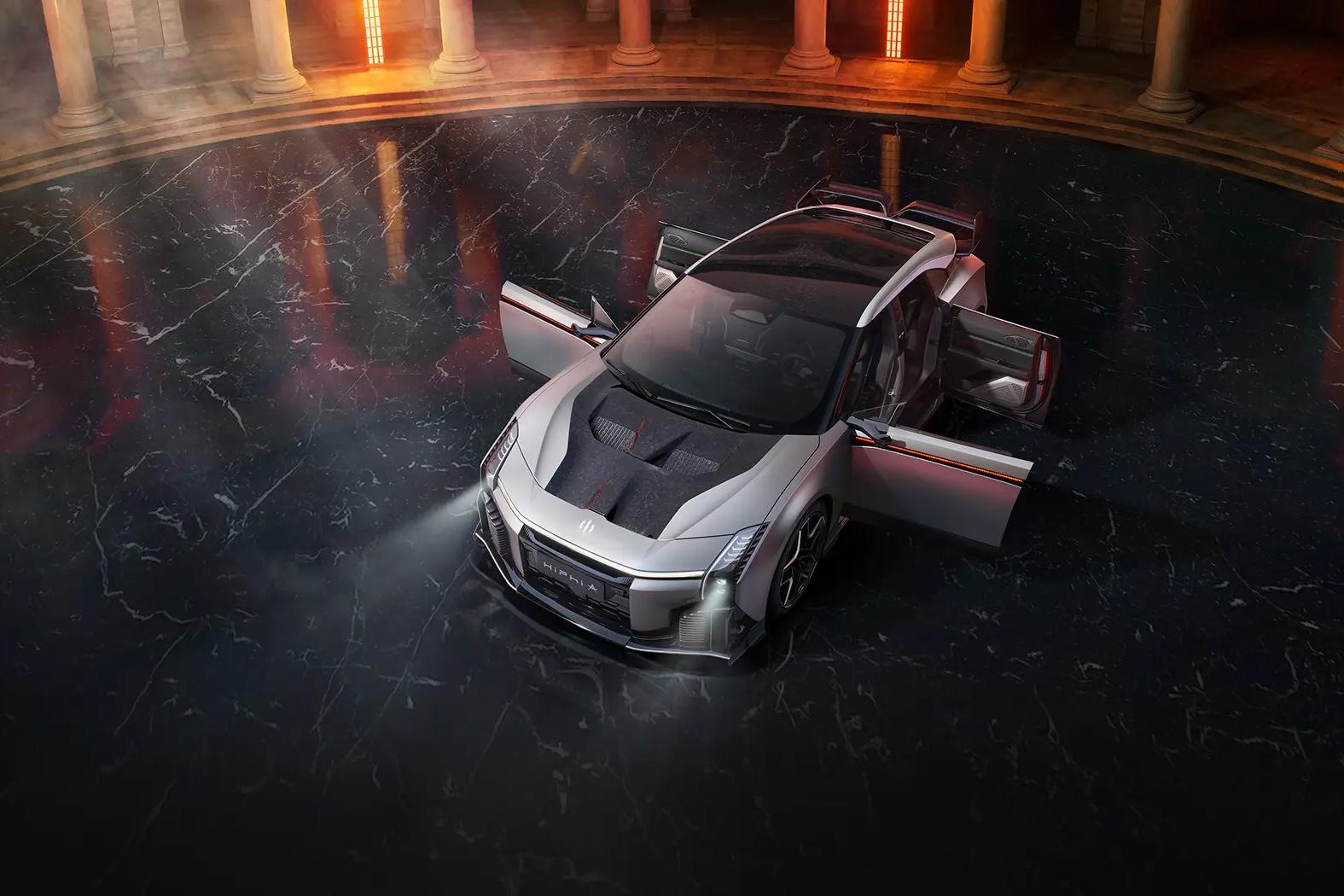HiPhi co-branded supercar maker Apollo has unveiled its first co-branded supercar, the HiPhi A. Externally the HiPhi A continues the styling of the HiPhi Z, with most of the bodywork also featuring Apollo logos, and is best characterised by having 1,305bhp, making it one of the models in China that has more than 1,000bhp, with its biggest competitor being the Zeekr 001 FR, which was launched some time ago.

Origin of Brand Logo
On the brand logo, you’ll notice that the letter A is an artfully designed one that looks particularly anime-esque, so why this A? Strictly speaking, it can’t be considered a new model line for the HiPhi brand, but rather a special version of it.
This A is the letter of the sun god Apollo, so where does this Apollo come from? People who like tuning cars know that in Europe, there is an extreme tuning brand called Apollo, and this Apollo not only does extreme tuning, it also specialises in customising to build some of the hacking supercars, the so-called hacking supercars, the Hyper Car. HiPhi A, that is HiPhi and Apollo, two brands, made a special edition of the model.

External Appearance
So what difference can the Apollo-designed HiPhi A make? When you see the car, you don’t associate it with HiPhi Z. HiPhi A is twice as big as HiPhi Z on site, so where is the increase in width?It’s that it’s noticeably wider where the headlamps are on both sides. The HiPhi Z is 2018 wide, and the HiPhi A is at the very least 5cm wider on each side of the headlamps, and with that width, it looks and feels like it’s bigger on top of the visuals.

Tail design
Behind the rear, there’s an extremely ostentatious racing-type big rear wing, and it looks like a Porsche racing version of the GT3.

Aerodynamic design
Because of the wider wheelbase and lower bodywork, the aerodynamic package has to be taken to the extreme to achieve this kind of performance on the track. First, we can see the sharp and large front spoiler as a front wing with end plates, which are only evident in Formula cars, and the deflectors on top of the front spoiler.

From the rear of the wheels, you can see the very wide slit deflector slots, and the front side skirts have an end plate at the rear and a larger end plate for the vertical upside wing, purely aerodynamic design for increased downforce.
The HiPhi A not only has deflector slots underneath the bodywork on the top side as well, but we can see the deflector slots continue to flow out from the side of the front wheels tightly against the bodywork coming to the rear wheel arches; it’s a very extreme aerodynamic and kit. The aim is to keep the airflow flowing close to the bodywork rather than being pushed away from the car. This doesn’t just boost its downforce but also reduces the air resistance when it’s travelling.

The HiPhi A’s wide side skirts are meant to create a kind of ground cover to allow the ground to create a vacuum to suck the car to the ground. At the same time, his professional diffuser is like the large black diffuser that sticks out of the rear of the prototype cars at Le Mans.
Forged carbon fibre roof
The overall design of the HiPhi A is still in the style of a cyber-mecha, with light-coloured bodywork and black-coloured features, and the entire roof of the HiPhi A, including the inner rims of the wheels, is made of high-grade forged carbon fibre. A quick search will show you who uses forged carbon fibre, namely the Lamborghini Urus.

The rear wing of the HiPhi A is multilayered. The rear lid itself is a double-layered wing, and with the addition of a large rear wing on top, it becomes a three-layered structure that generates a particularly large amount of downforce. The factory indicates that the tail is adjustable when the product is in mass production. When the tail can be adjusted, we can pursue small air resistance and high downforce.

Some people say that his chassis is so low. How to drive? Parking state suspension automatically lowers the front shovel pressure from the ground by almost 5cm or so, but in fact, in the driving state, it is not so. It is equipped with air suspension, so when entering the car to drive it, it will automatically raise after power to form a reasonable ground clearance.
Door opening method
The door opens in a unique folio style. It continues to retain HiPhi Z’s exterior lighting that interacts with the human-machine interface, which is HiPhi’s way of establishing its own unique style, and that style is the CyberMech. In addition, it’s worth mentioning that when you open the doors, the ambient light display is red, and when it’s closed, it’s the normal colour of the ambient light set up in the car.

Interior Styling
The seats are also very race-inspired, but it doesn’t give up on the comfort you should have for everyday driving on the road, so instead of being a thin shell seat like a supercar, it’s quite thickly cushioned to give you good enough comfort for everyday driving and riding.
The use of carbon fibre as a decoration is also seen clearly inside the car. The skeleton of the seats is made of forged carbon fibre, which gives the effect of a mica pattern. There is a streaming screen on both sides of the car, and the factory says that the screen’s bracket will be made of 3D-printed titanium.

The independently separated rear seats are also racing-style seats that use very thick cushions, enough to ensure that the ride is still comfortable. Because the front seats are made of carbon fibre, the seat backs are thinner, so there’s more room for the rear legs. We also noticed a detail: the outer layer of laminated glass thickens.

Summary
The fusion between HiPhi A and Apollo allows us to better draw on the design and manufacturing experience of supercars and Speedsters. The combination of energy and electric capability continues the research and development in the field of triple electrics. Although the HiPhi A is a three-motor car, its overall power will exceed that of the ZEEKR 001 FR, so let’s see what it shows in the future.


